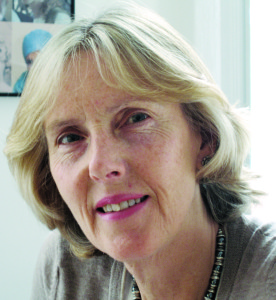 Patients don’t only access services. They observe them acutely too. As they lie in hospital beds and are “processed” through outpatients and emergency centres they perceive quality and safety at the sharp end. They and their carers are also innately alerted to when “something is not right;” either in themselves, or the health system. So in an era where patient and carer experience is cited as a resource to help improve standards of care, what’s their role in making it safer?
Patients don’t only access services. They observe them acutely too. As they lie in hospital beds and are “processed” through outpatients and emergency centres they perceive quality and safety at the sharp end. They and their carers are also innately alerted to when “something is not right;” either in themselves, or the health system. So in an era where patient and carer experience is cited as a resource to help improve standards of care, what’s their role in making it safer?
Depressingly high rates of avoidable medical error, including errors which cause or contribute to death, makes this a pertinent question. Many of the 500 or so patient safety champions who are members of the World Health Organization’s International Patients for Patient Safety network have become motivated to campaign for safer care as a result of personal suffering and loss.
At a recent meeting in Brussels, convened by the European Patients Forum, several key messages emerged on how to empower patients and families to play an active collaborative role in reducing unintended harm, and the “competencies” they needed to help them do this.
Firstly, there is a need to tackle the power imbalance between health professionals and patients which deters patients from voicing concerns. Patients spoke about the fear of “bothering busy staff” and “being labelled as a trouble makers” if they speak out. They also pointed to the tendency of health professionals to dismiss their concerns as not “medically legitimate.”
Evidence to support the view that patients and carers raise valid concerns and alerts which health professions rebuff or sideline was cited by Nicola Mackintosh, a research fellow in the King’s College London Improvement Science Research Department. She went on to lead a debate on what sort of patient alert and feedback systems are likely to be most effective in reaching staff and helping inform strategies to improve care and reduce unintended harm. A Cochrane review was underway, she said, to collate the evidence on which interventions help patients and families speak up about deterioration in their condition and escalate concerns.
A specific initiative that was flagged up was the Danish “Thanks for asking” campaign which supports patients and families to ask questions and raise concerns. Another referred to was a shared digital platform for use by patients and staff being piloted in Bulgarian hospitals. Repeatedly, speakers underlined the need for better and more timely communication between patients and healthcare professionals, and ensuring that the (so called) patient “hot lines” staff set up are accessible and responsive at all hours.
Integrated e health records were also seen as essential in the drive to make care safer, and it was argued that all patients should be able to access their medical records and hold them on a memory stick so that when they see different providers, their history is readily to hand.
Full transparency about the frequency, nature, and cause of adverse events was another message. People who suffer as a result of substandard care deserve a measured and timely explanation of what went wrong and why, as well as an apology, participants agreed. The public should also readily be able to access information about the quality and safety of care of providers, in a form that they can understand.
Niek Klazinga, head of Health Care Quality Indicators at OECD, said that patient empowerment was crucial for better patient safety and effective safe care, and depended on collaboration between patients, families, and care providers. He described the organization’s work collating and publishing comparative country wide data on mortality and morbidity and the collection of PREMs, PROMS, and more recently PRIMS data (patient reported experience, outcomes, and incident measures respectively). The organisation is also in the process of defining a set of patient centred quality indicators, he said, including ones based on answers to questions such as: “Did staff give you the opportunity to ask questions and raise concerns?” and “Were there times when the staff who saw you did not have access to your history and test results?”
A further message, put over strongly by Bernard Maillet, vice president of the Standing Committee of European Doctors, was that health systems must move away from a culture of blame and bullying, which deters staff from acknowledging and reporting critical events and concerns about unsafe and substandard care.
Initiatives where patients are working as partners within teams of health professionals to improve the quality and safety of care were presented at a recent King’s Fund meeting. Speakers included Sara Turle, a patient advocate, who works with Barking, Havering, and Redbridge University Hospitals NHS Trust. She spoke about her role in the weekly multidisciplinary patient safety summit meeting that the Trust routinely holds.
Her questions and comments have provided us with important new insights, Kathryn Halford, chief nurse at the Trust, told The BMJ. And these have been used to improve care pathways and provide patients and carers with more timely information and support. Patient participation in safety summits sit alongside a range of other patient partnership initiatives that the Trust has introduced to promote patient safety, she said.
Tessa Richards is senior editor/patient partnership, The BMJ.
See also: The presentations from the European Patients Forum.
